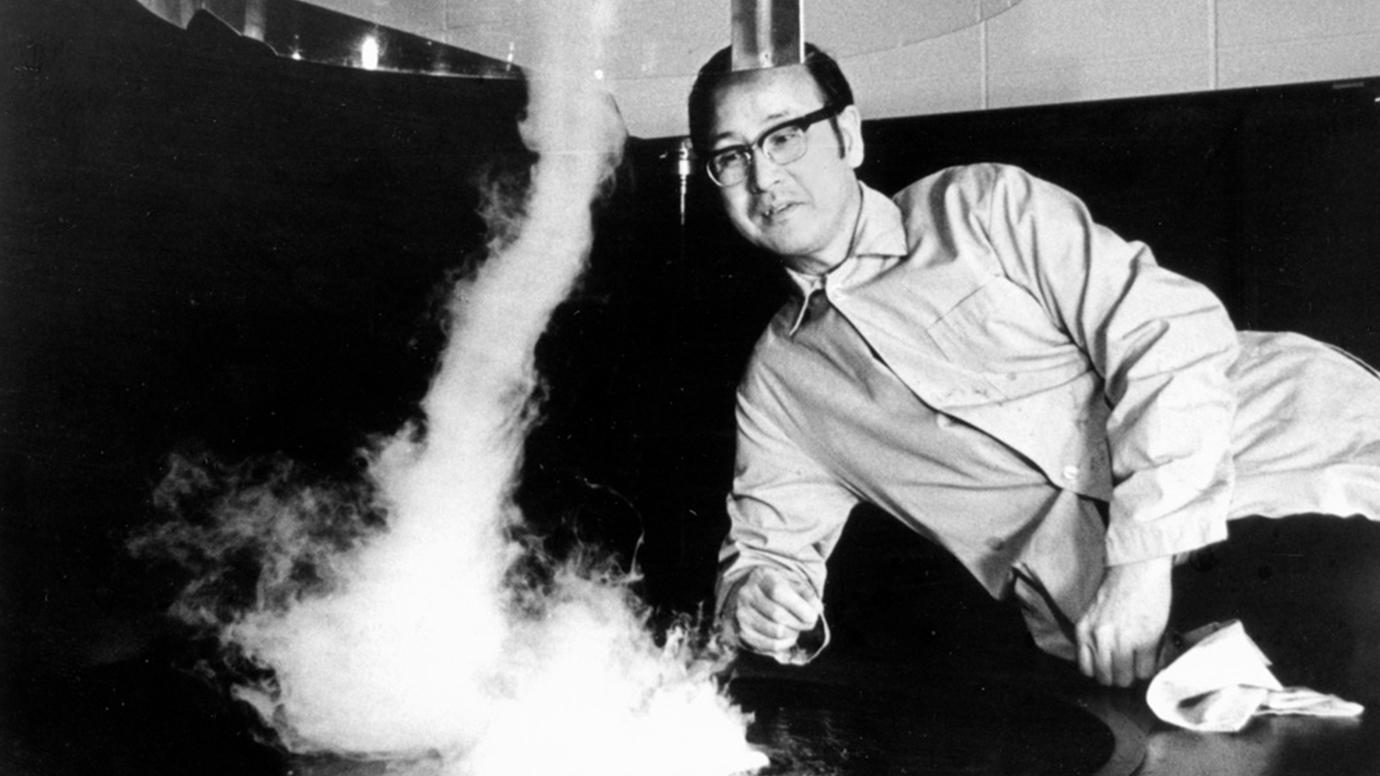Science Snapshots: Everything that is Wrong and Wonderful about Twister (Part 2 of Several)
Before we continue past the opening scene, I must correct my previous post slightly. I neglected to mention an egregious error in that opening scene. As the dad is running down the stairs with his family to seek shelter, he says something to the effect of, "TV says it's big, might be an F-5!"
 |
| Ted Fujita in the lab |
Some of the excellent work Dr. Fujita brought to the field was his development of damage surveys. He would fly over tornado tracks and perform on-ground storm surveys to understand the mechanics of tornadoes. He was also a pioneer in the use of photogrammetry, where one can measure debris in consecutive pictures of tornadoes and use these measurements to determine the speed and motion of the vortex.
Back to the Fujita Scale. The Enhanced Fujita Scale, which replaced the original in 2007, was updated to better correlate wind speeds with the damage observed. The scale provided by the Storm Prediction Center is shown below. Note that, for example, the Enhanced scale caps an EF-5 as over 200 mph, which is considerably lower than the wind estimate given in the original. It's critical to note that, unlike hurricanes, tornadoes are rated by damage and not by wind speed. So read the damage column and take the wind estimate column always with a grain of salt. When doing damage surveys, it's important to keep several caveats in mind. For example, stronger tornadoes are needed to uproot trees in rock hard soil than in moist and soft soil, so one can't simply look for uprooted trees. Or a poorly-built home will show more damage than a well-built home at the same wind speeds. Meteorologists performing storm surveys take these and many other factors into account before giving an EF-Scale rating.
So, why the history lesson? Because you should know that Ted Fujita is one of the most important figures in severe weather research and provided the very foundations of our understanding of downbursts, tornadoes, and methods for researching those tornadoes. Every meteorologist knows his name and benefits from his body of work today.
But why in a rant about Twister? I'll set aside Twister's obsession with F-5s for the moment. It's because the scene in question takes place in June 1969, while Dr. Fujita introduced his F-scale, in collaboration with Allen Pearson from the National Severe Storms Laboratory, in SMRP Research Paper Number 91 entitled, "Proposed Characterization of Tornadoes and Hurricanes by Area and Intensity" in February 1971. Not only was the F-scale not in every day use by the general public in 1969, it hadn't even been invented yet!





Comments
Post a Comment